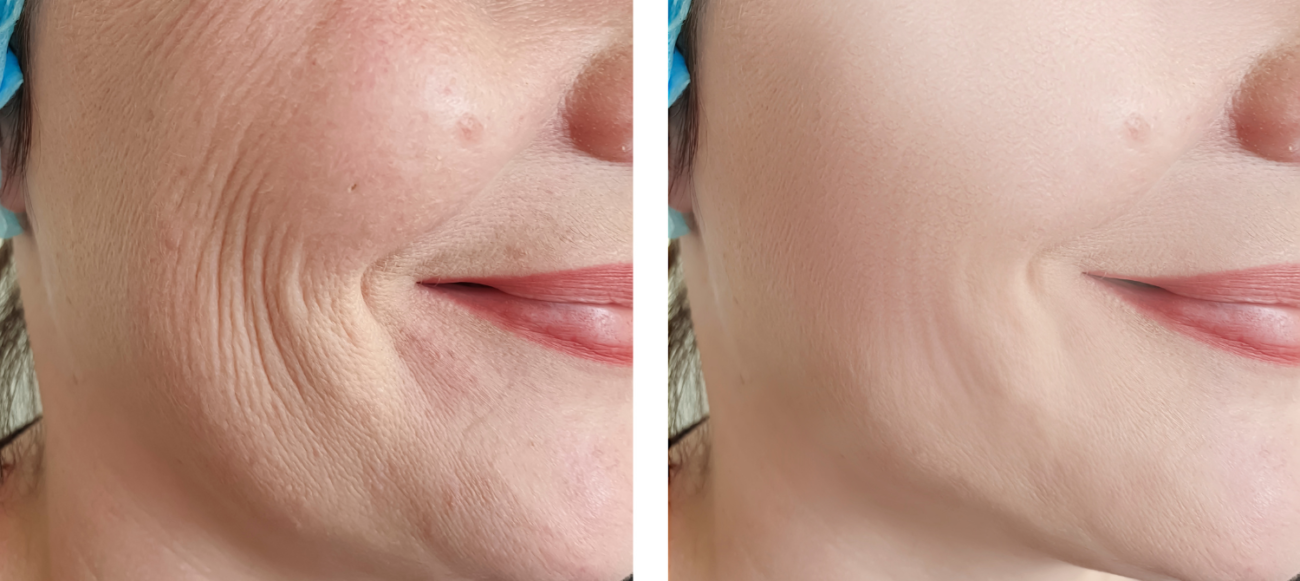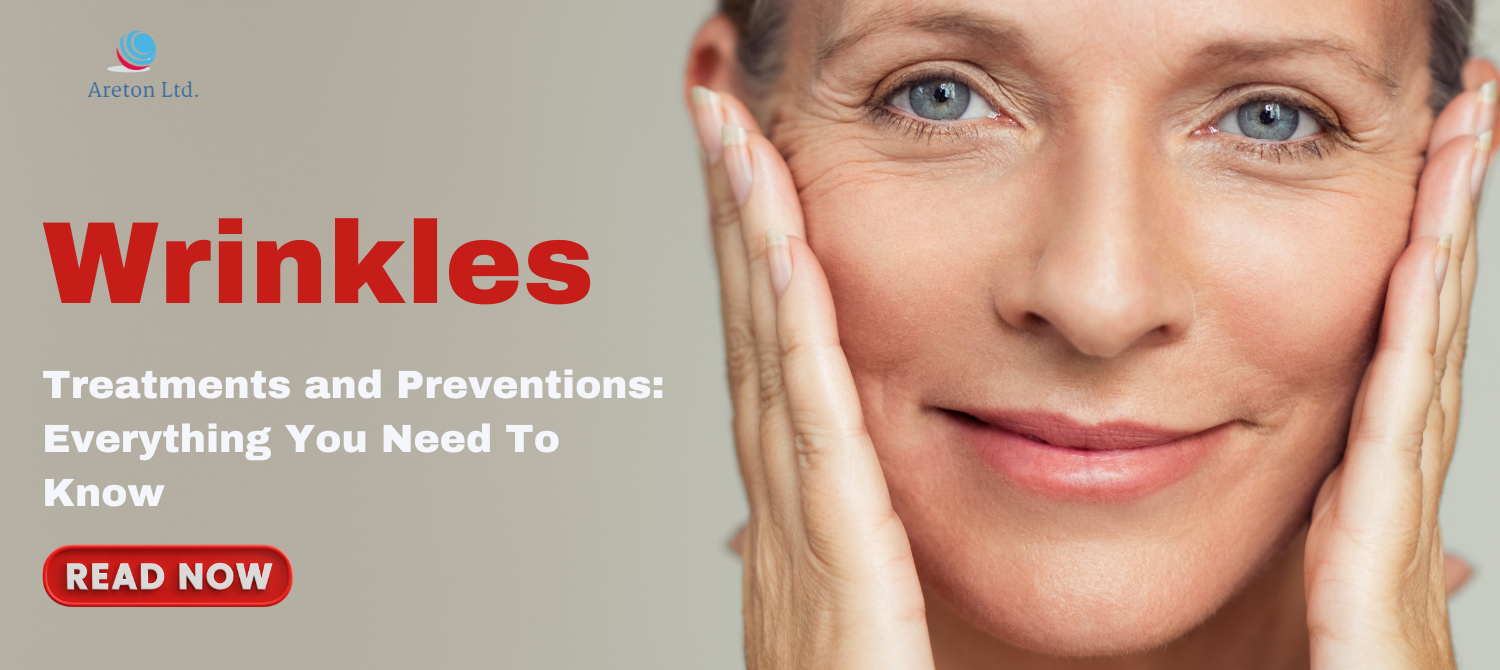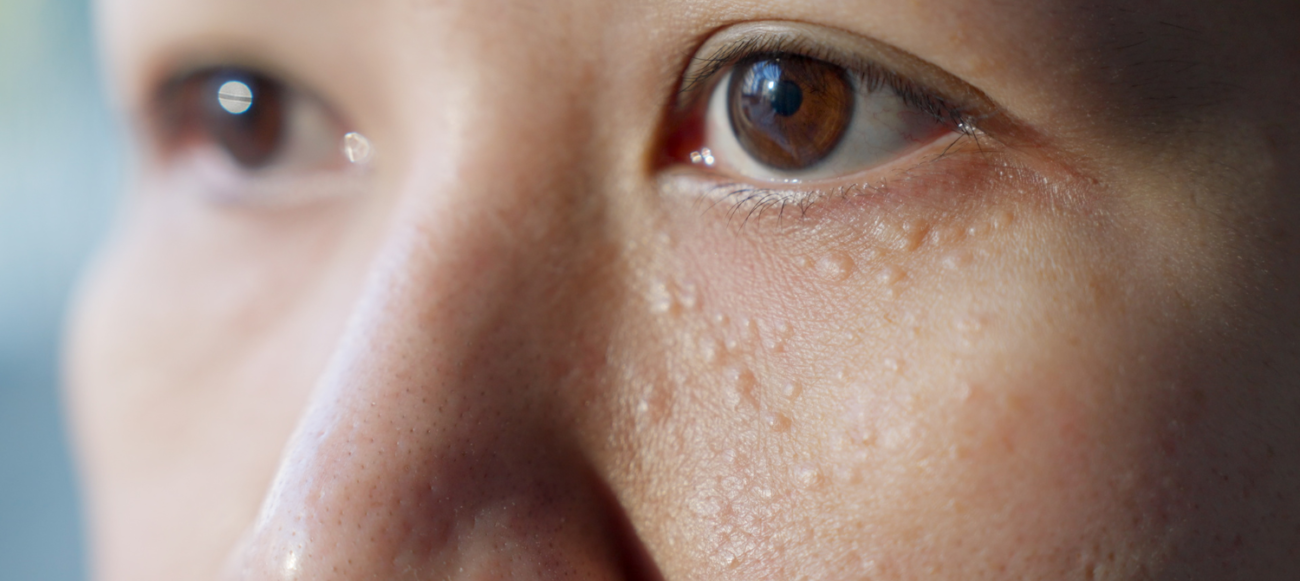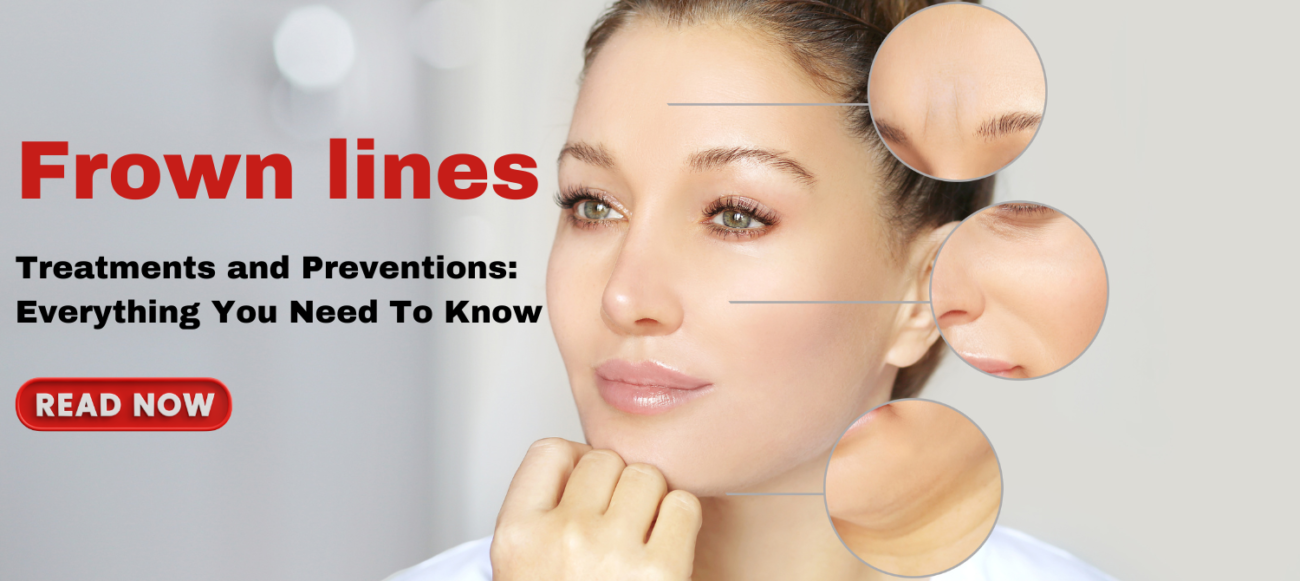What Are Wrinkles?
Wrinkles are folds, ridges, or creases in the skin that naturally develop as we age. They are a normal part of the aging process that both men and women experience. Wrinkles typically start to become visible in our late 20s or early 30s.
Wrinkles commonly form on areas of the body that receive frequent sun exposure, such as the face, neck, hands, and arms. Facial wrinkles often first appear around the eyes, mouth, and forehead. Crow’s feet, smile lines, and forehead lines are some of the most common wrinkles that people get as they age. Wrinkles can also develop on the neck, referred to as neck bands. On the body, wrinkles frequently occur on the chest, shoulders, arms, and hands.
Wrinkles form as our skin starts to thin and lose elasticity over time. The natural aging process causes our skin’s collagen and elastin fibers to weaken and break down. Without these important proteins, the skin loses its firmness and smooth appearance. Additionally, skin cell turnover slows down as we get older, resulting in a buildup of dead skin cells. This causes the skin to appear duller and promotes wrinkle formation. While wrinkles are a natural part of life, there are ways to reduce their appearance, which will be covered later in this article.
What Causes Wrinkles?
Wrinkles form for a variety of reasons as we age. Some of the most common causes include:
Sun Exposure and UV Damage
Repeated sun exposure and UV radiation from the sun breaks down collagen and elastin in the skin over time. This leads to wrinkles, age spots, and other signs of sun damage. Using sunscreen daily is crucial to protect the skin.
Smoking
The repetitive facial movements made when smoking cigarettes, along with the chemicals in cigarette smoke, accelerate wrinkles around the mouth and eyes. Smoking narrows blood vessels in the outer layers of skin, which damages collagen.
Dehydration
Staying hydrated by drinking plenty of water plumps up skin cells and keeps the skin moisturized. Dehydration leads to dry, flaky skin that is more prone to showing fine lines and wrinkles.
Facial Expressions and Repetitive Motions
Frequently making facial expressions like frowning and squinting forms creases in the skin over time. Also, repetitive facial movements when talking on the phone or sleeping in one position can etch lines into the face.
Loss of Elasticity
As we get older, our skin produces less collagen, elastin, and fatty tissue beneath the surface. This causes the skin to become thinner and lose elasticity. Skin no longer bounces back after being pulled or stretched, making wrinkles more noticeable.
Types of Wrinkles
Wrinkles can appear in different areas of the face and neck. Some of the most common types of wrinkles are:
Fine Lines
Fine lines are thin creases that start to form on the skin. They often first develop around the eyes, mouth, neck, and forehead. Fine lines are a natural part of aging, as the skin becomes thinner and loses some elasticity over time. Using sunscreen and moisturizer may help reduce the appearance of fine lines.
Crow’s Feet
Crow’s feet refer to the fine lines that form at the outer corners of the eyes. Squinting, smiling, and other facial expressions can cause crow’s feet over time. Applying eye cream and wearing sunglasses more often may diminish their appearance.
Frown Lines
Frown lines are wrinkles between the eyebrows that develop from making facial expressions like frowning or squinting. Botox injections are commonly used to temporarily relax the muscles that cause frown lines. Using a daily moisturizer can also help soften their look.
Forehead Wrinkles
Horizontal creases that develop across the forehead are often an early sign of aging. Raising the eyebrows frequently contributes to forehead wrinkles over the years. Some people massage their forehead daily or use wrinkle creams to help reduce the visibility of these lines.
Smoker’s Lines
Smoker’s lines are wrinkles that form around the lips from the frequent puckering motion of smoking cigarettes. They can make the lips appear thinner. Quitting smoking and applying lip balm with SPF can help prevent additional smoker’s lines from developing.
Laugh Lines
Also called nasolabial folds, laugh lines are creases that extend from the nose to the corners of the mouth. Laughing, smiling, and other facial movements lead to laugh lines. As we age, they can become more pronounced. Facial fillers are a popular option for diminishing the appearance of laugh lines.
How Can Wrinkles Be Prevented?
Wrinkles are a natural part of aging, but there are steps you can take to prevent and minimize their appearance. Here are some tips for keeping your skin looking youthful and wrinkle-free:
Wear Sunscreen Daily
Wearing sunscreen every day is crucial for preventing premature aging and wrinkles. UV radiation from the sun breaks down collagen and elastin in the skin, which are proteins that keep skin firm and elastic. Choose a broad spectrum sunscreen with an SPF of at least 30 and apply it to all exposed skin, even on cloudy days. Reapply sunscreen every 2 hours when outdoors.
Stay Hydrated
Drinking plenty of water keeps your skin cells plump and healthy. Dehydration causes skin to become dry and lose elasticity.Aim for around 2 liters of water per day to maintain hydration and keep your complexion smooth. You can also consume foods with high water content like fruits, vegetables and soups.
Don’t Smoke
Smoking severely damages collagen and elastin fibers in the skin. Chemicals in cigarette smoke thin the skin and reduce blood flow, depleting nutrients and oxygen from reaching skin cells. This accelerates wrinkles around the lips and eyes in particular. Avoid smoking and second-hand smoke to maintain a youthful complexion.
Healthy Diet
Eat a diet focused on lean proteins, fruits, vegetables and whole grains. Antioxidants from foods help counteract skin damage from free radicals caused by sun exposure and pollution. Vitamins like A, C and E are especially important for collagen production and healthy skin. Essential fatty acids from fish, nuts and seeds also nurture skin elasticity.
Facial Exercises
Simple facial exercises can tone underlying muscles and stimulate blood circulation in the skin. Try smiling widely, puckering lips, elevating eyebrows or scrunching your nose for an easy DIY “facelift”. Yoga facial exercises are also popular for relaxing muscles and reducing wrinkles. Just don’t make exaggerated expressions which could worsen dynamic wrinkles. Regular exercise keeps oxygen and nutrients flowing to nourish skin cells.
Wrinkle Treatments
There are several effective ingredients and products that can help treat existing wrinkles and prevent new ones from forming. Some of the most common and effective wrinkle treatment options include:
Retinoids
Retinoids are vitamin A derivatives that can increase collagen production and cell turnover. They help repair sun damage and reduce fine lines and wrinkles. Retinoids are available over-the-counter in weaker strengths and by prescription in stronger formulations. Using retinoids consistently can gradually improve wrinkles over time.
Alpha-hydroxy Acids
Alpha-hydroxy acids (AHAs) like glycolic acid and lactic acid are exfoliants that help remove dead skin cells. This reveals smoother, younger-looking skin underneath. AHAs may also stimulate collagen production. They are found in many over-the-counter serums, creams, and peels. Using AHAs can help reduce the appearance of fine lines and wrinkles.
Antioxidants
Antioxidants like vitamin C, vitamin E, and green tea help counteract free radicals, which damage skin cells and cause signs of aging. Topical antioxidants may help protect skin from sun damage and reduce the appearance of wrinkles. They are common ingredients in anti-aging serums and creams. Using antioxidant products can help prevent new wrinkles from forming.
Moisturizers
Hydrated skin helps reduce the appearance of fine lines and wrinkles. Using moisturizers can draw water to the skin surface and temporarily plump out wrinkles. Look for moisturizers with hydrating ingredients like glycerin, hyaluronic acid, ceramides, and shea butter. Apply moisturizer after serums to seal in hydration.
Peptide Creams
Peptides are chains of amino acids that can stimulate collagen production. Certain peptides have been shown to help reduce wrinkles, especially around the eyes and mouth. Peptide creams should be used consistently for best results. Look for products containing peptides like Matrixyl, Argireline, or palmitoyl pentapeptide.
Medical Procedures for Wrinkles
For more severe wrinkles, medical procedures may be an option. Some common medical treatments for wrinkles include:
Botox
Botox injections contain a purified form of botulinum toxin that relaxes facial muscles to smooth wrinkles. Botox is injected into specific muscles like crow’s feet, forehead lines, and frown lines. Results last 3-6 months.
Dermal Fillers
Dermal fillers like Juvederm and Restylane are injected under the skin to fill wrinkles and folds. They add volume to soften wrinkles and lines around the nose, mouth, cheeks and lips. Results can last 6-18 months.
Chemical Peels
Chemical peels use acids to remove damaged outer layers of skin. This promotes new collagen growth and revealing newer skin. Chemical peels can treat fine lines, acne scars, and hyperpigmentation. Results are temporary but peels can be repeated.
Laser Skin Resurfacing
Lasers remove damaged outer layers of skin. As skin heals, new collagen forms, improving skin texture and reducing wrinkles. Different laser treatments like CO2 laser resurfacing, fractional lasers, and erbium lasers can be used on the face, neck, chest, and hands. Results last months to years.
Microneedling
Microneedling creates tiny punctures in the skin using small needles. This stimulates collagen production and healing. Microneedling improves texture, scars, pores, and fine lines. Several treatments are needed but results can last over a year.

Natural Remedies for Wrinkles
There are several natural ingredients that can help reduce the appearance of wrinkles when applied topically. Here are some of the most effective options:
Aloe Vera
The gel from the aloe vera plant is renowned for its soothing and hydrating properties. It contains powerful antioxidants like vitamin A, C and E which can help combat skin aging. Applying pure aloe vera gel directly to wrinkles and massaging gently may help diminish their appearance over time.
Coconut Oil
Virgin coconut oil is rich in fatty acids and hydrating properties that keep the skin supple. The lauric acid in coconut oil also has anti-inflammatory effects which can help reduce swelling and redness. Massaging virgin coconut oil into wrinkles can lessen their severity.
Green Tea
Green tea contains antioxidants called catechins that help protect the skin from sun damage and free radicals that cause wrinkles. Brewed green tea bags can be cooled and then placed on wrinkles or eye bags to reduce puffiness and lines.
Vitamin C
Vitamin C is essential for collagen production which keeps the skin firm and elastic. Topical serums with vitamin C can help brighten skin and fade wrinkles when used regularly. Eating vitamin C foods like oranges, peppers and broccoli may also combat wrinkling.
Rosehip Oil
Rosehip oil is pressed from rosehip seeds and contains vitamin C. It has significant anti-aging benefits for the skin. Gently massaging wrinkles with rosehip ovil every night can lessen their appearance and improve skin texture over time.
Introducing Our Skin Care Soaps
Our skin care line offers several soaps that can help reduce the appearance of wrinkles and keep your skin looking youthful.
Charcoal Soap Bar
Our charcoal soap bar contains activated charcoal, which is known for its ability to draw out impurities from the skin. Charcoal is very gently abrasive, which makes this soap ideal for exfoliating dead skin cells. Exfoliation helps smooth rough skin texture and diminish the look of fine lines and wrinkles. In addition, charcoal soap can help minimize pores, absorb excess oil, and leave skin looking refreshed.
Salicylic Acid Scrub Soap
This exfoliating soap bar contains salicylic acid, an effective ingredient for reducing acne breakouts. Salicylic acid helps unclog pores and remove dead skin cells. Using our salicylic acid scrub soap helps gently exfoliate the top layer of your skin to reveal fresher, smoother skin underneath. This can help reduce the appearance of wrinkles. The scrub particles provide a gentle physical exfoliant to buff away dull surface skin.
Normal Salicylic Acid Soap
Our normal salicylic acid soap bar contains a lower concentration of salicylic acid. This makes it suitable for daily use for normal to oily skin types. Salicylic acid has the ability to penetrate deep into pores, where it helps dissolve dead skin cell buildup and oil. Using this soap bar regularly can help minimize enlarged pores and fine lines caused by congestion in pores. The salicylic acid helps renew your skin texture.
How Our Soaps Can Help Reduce Wrinkles
Our skin care soaps are specially formulated to help reduce the appearance of wrinkles and keep your skin looking youthful. Here’s how:
Gentle Exfoliation – Exfoliation is key for smooth, wrinkle-free skin. It removes dead skin cells and improves cell turnover. Our Charcoal Soap Bar contains activated charcoal which gently exfoliates without stripping the skin. Our Salicylic Acid Scrub Soap has jojoba beads to lightly scrub away dullness.
Deep Cleansing – Cleansing is crucial to remove dirt, oil and impurities that can settle into fine lines and wrinkles. Our soaps deeply cleanse pores without drying the skin. The activated charcoal in the Charcoal Soap Bar absorbs excess oil. The salicylic acid in the Salicylic Acid Scrub Soap and Normal Salicylic Acid Soap penetrates pores to dissolve dead skin cells and debris.
Stimulating Collagen Production – Collagen provides structure and elasticity to the skin. Our soaps contain ingredients like salicylic acid and vitamin E to stimulate collagen production. This helps strengthen the skin and reduces wrinkle formation.
Hydrating Skin – Dry, dehydrated skin is more prone to wrinkles. Our soaps contain moisturizing oils like sunflower, jojoba and olive oil to hydrate while cleansing. This plumps up the skin to minimize the appearance of fine lines and wrinkles.
Additional Tips for Wrinkle-Free Skin
Aside from using quality skin care products, there are several lifestyle habits that can help reduce wrinkles and keep your skin looking youthful.
Maintain a Healthy Lifestyle
Leading an overall healthy lifestyle is important for your skin. Eat a nutritious diet full of antioxidants from fruits, vegetables, and healthy fats. Avoid smoking, which can contribute to wrinkles. Get enough sleep and manage stress, as high stress levels can accelerate aging.
Manage Stress
Chronic stress takes a toll on your skin and can lead to more wrinkles over time. Practice stress-relieving habits like meditation, yoga, or deep breathing. Make time for relaxing activities and get emotional support when needed. Managing stress will benefit your mind and your skin.
Protect Skin from the Sun
UV radiation from the sun is responsible for up to 90% of visible skin aging signs. Always wear broad spectrum sunscreen with at least SPF 30 when going outdoors. Seek shade during peak sun hours. Wear protective clothing and a wide-brimmed hat. Avoid tanning beds. Protecting your skin from the sun will prevent premature wrinkles.
Stay Hydrated
Drinking plenty of water keeps your skin cells plump and your complexion glowing. Aim for at least eight glasses of water per day. You can also consume herbal teas, fruit infused water, and foods with high water content. Proper hydration equals happy skin.
Moisturize Daily
Using a daily facial moisturizer nourishes your skin, combats dryness, and reduces the look of fine lines. Look for a moisturizer with hydrating ingredients like hyaluronic acid, glycerin, aloe vera, and natural oils. Apply moisturizer after cleansing, while skin is still damp, to seal in moisture. Consistent moisturizing keeps skin smooth and supple.




